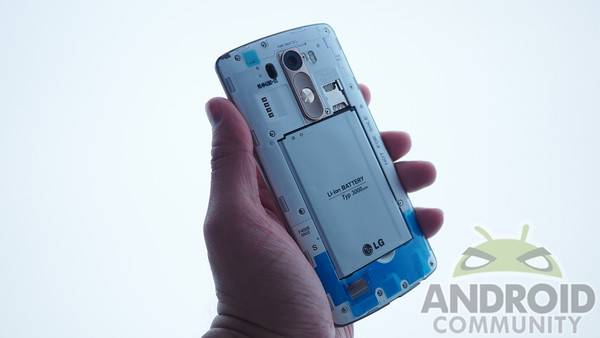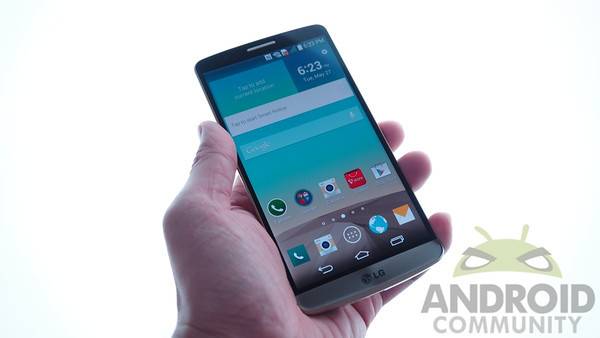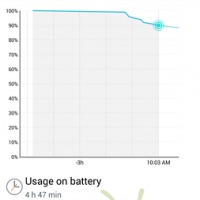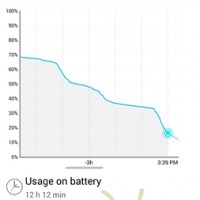
The LG G3 has a lot going for it, packing a lot of muscle beneath a gorgeous 5.5-inch screen. Though it’s got a massive 3,000mAh battery, we questioned whether battery life would suffer under normal use. As it turns out, the battery life is not only impressive, it’s outstanding.
We should take a second to note the LG G3 we’re testing is not a final build, nor is it technically a US version. Though it’s expected little will change for the US, we have been running our International model on AT&T’s LTE network with success. We also removed quite a bit of the “bloatware” from SK Telecom before running these battery tests. WiFi was also turned off, leaving the G3 to rely only on our cellular connection.

The Snapdragon 801 is already excellent at minimizing power drain when not in use, and that’s the chipset found in the LG G3. Though we’ve seen the SoC work marvelously elsewhere with regard to battery life, we’ve not seen anything like the LG G3’s battery performance. The device comes with no additional power saving mode, so what you see is a stock device with no special “mode” to speak of. LG has, however, optimized this device to take advantage of it’s massive battery.
The battery life screenshots seen below give a good take on daily use, standby, and heavy use situations. We left the device on standby several times to test what life would be like during light usage, where you can see it nearly flatlining. What we saw was LG estimating we’d get roughly 42 hours from our G3 in that scenario. With fairly heavy usage (again, daily activity, not intense gaming or the like) we were still able to get 13 hours from our G3.
During “normal” use, which is checking email, messaging, some app usage and streaming video from Netflix, we would still get more than a day’s use out of the G3 — easily. The device barely draws power when not in use, but even with average use our device estimates put us right around 16 hours.
With the Snapdragon 801, cores are kept in limbo until needed, effectively shutting part of the SoC down until it needs to be active. Again, we’ve seen this to some success on other handsets, but the G3 has improved on that a great deal.
To solve battery life woes, LG has come up with what they call their ‘three A’s’. The three tenets here — adaptive frame rate, adaptive clocking, and adaptive timing control — all serve their battery master admirably. The first of those, adaptive frame rate, uses slowed screen refresh times when still images are displayed. It’s basically using what pixels it needs, when it needs them.
Adaptive clocking is a feature that basically “under-clocks” the Snapdragon 801. When idle, the SoC sips juice, and does the absolute bare minimum it has to. Adaptive timing helps with that, too, basically controlling the display driver.
With those three tweaks, LG thinks they can keep their powerful Quad HD device right to the same battery consumption standards of a 1080p smartphone. They’ve done a great job, but it’s worth noting that all of their power saving attempts are screen related, if only tangentially. Using an adaptive frame rate and controlling the screen driver are big helps to the Snapdragon 801 and SoC tweaks LG made, but it all comes back to the screen.

With a 5.5-inch display packing a ridiculous 538 ppi at 2560 x 1440, the G3 is roughly 1.5-times the density of a 1080p screen. To scale the power consumption back to a similarly specced device with a 1080p screen is quite a feat.
In summary, LG has basically taken a massive, consumptive display with a powerful and progressive chipset, then controlled the battery life with software. While we still caution against considering these early returns the standard, they do provide some impressive results. Once we get our hands on a final build of the device, we’ll be sure to test it once again.
So far, we’re impressed with the G3’s battery life. Through streaming media via Netflix and other daily tasks, the G3 is above reproach. We were expecting something good from the G3, but these results are simply great.
Vincent Nguyen contributed to this report.















Can’t wait till t mobile release this bad boy!!
what was the SOT?
What was the Screen-On time? who cares about standby.
All we care about is relative to other phones. Better than G2? S5, M8? Note 3? Absolute numbers are irrelevant.
What RXG9 said. No one cares about standby time. This is not just a phone it a compute that fits in your pocket and wants to get used all day long. What you guys posted doesn’t sound too impressive to me. I want a phone that i can take to uni and use it for reading pdf files and other important materials for at least 10 to 12 hours a day, so screen on time is more important than anything else.
A Korean YouTube report suggests 7hrs of screen on streaming video play. That’s impressive.
And it has a removable battery!
I don’t get how people can test battery life without talking about screen-on time. This is almost worthless… Srsly, no one cares about statements like ‘it gets us thorugh the whole day’. Every one has different approach to their phones, so such complex statements are not worth anything..
yeah screen on time when heavy gaming and screen on time browsing, screen on time using forum app, screen on time moviewatching and total time listening to audio. also some experimental charging strategies, to gain eg the 100% magic mark on g3 😉
other usage patterns are to subjective and reliant upon own interpretations, one mans heavy might be another mans lights usage pattern. Mixes to mimmick do say much as its not precise
So it seems that the phone will last forever when not in use, but I think there are some steep drops when the screen was on. I’m fairly happy seeing this, but battery life is my main concern with any potential drawback to the G3…
Are these 3 features ones that could be utilised by other smartphones?
“The Snapdragon 801 is already excellent at minimizing power drain when not in use, and that’s the chipset found in the LG G3.”
Do you guys have a copy editor or not? This is atrocious.
This is a BS battery review.
No SOT mentioned.
Was it that low!?!?